Alere Consult
Designing care plans to improve patient outcomes
Context
- When
- 2013 – 2014
- My Role
- Product Designer
Coordinating care for patients with chronic conditions is difficult. Clinicians across many care settings use different software to help patients. And when that software doesn't talk to each other, people like primary care physicians, care coordinators, and telecoaching nurses are forced to spend lots of time entering redundant data, rather than spending time helping their patients.
In my role as a designer, I was excited to improve patient outcomes and help them live in their own homes. Here's one slice of the work I did in building the Care Plans feature. This work allowed clinicians to coach patients more naturally and create a shared goal to work toward.
A quick win – showing care plans
One of our customers asked for a feature to bring their care plans into our product.
Since we were in a time crunch with lots of opposing views to balance, I did a quick whiteboarding exercise with our product manager. I then jumped into design software and created a mid-fidelity design to share our initial layout ideas.
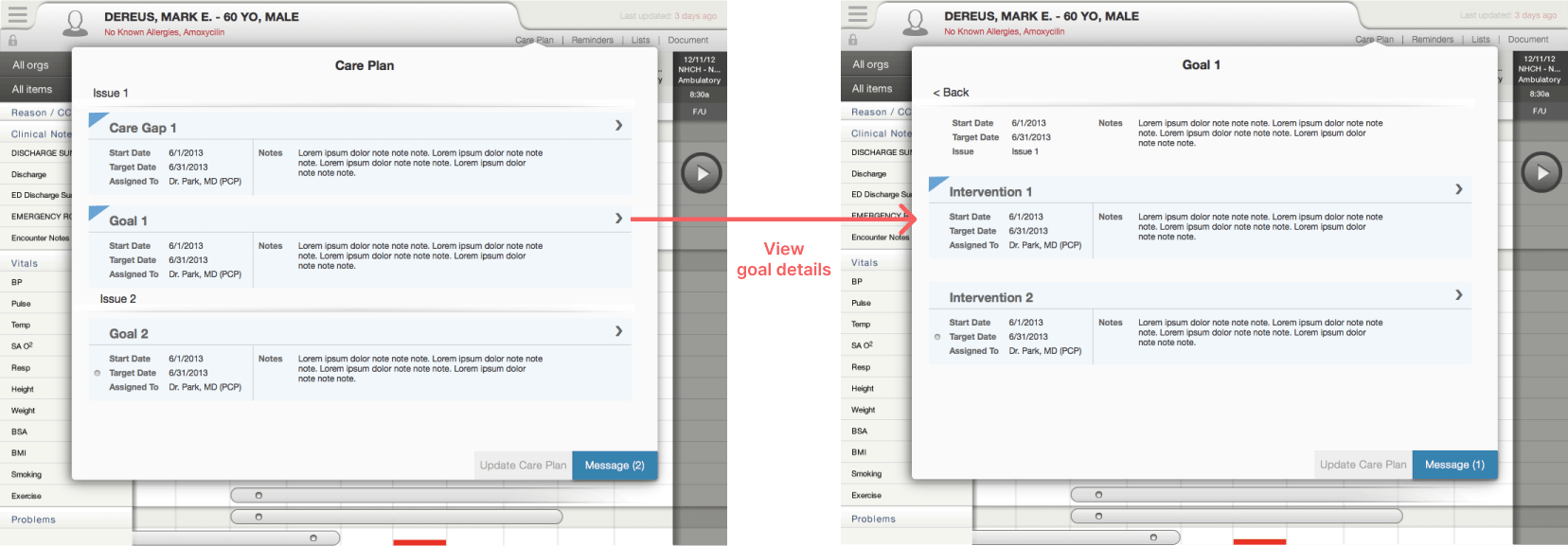
You can think of this solution as "stick it over here and print out the database table".
Documenting patient visits
As our product grew from an HIE (a place to see patient records across care settings) to an EMR (a place to document patient visits), we needed to revisit the Care Plans feature.
The problems we had to solve in context of care plans were:
- How would we document a visit?
- How would we view a past visit?
- How would we amend a past visit?
- How would we sign a chart note with a care plan?
In other words, how would we build "CRUD" for the Care Plan feature?
Pitching a research plan
Before continuing to build more Care Plans features, I pitched that we should do some research – I wasn't convinced we were on the right path. Our team understood a few personas well (our hospital buyers and physicians), but hadn't spent time with others who used Care Plans in the clinical ecosystem.
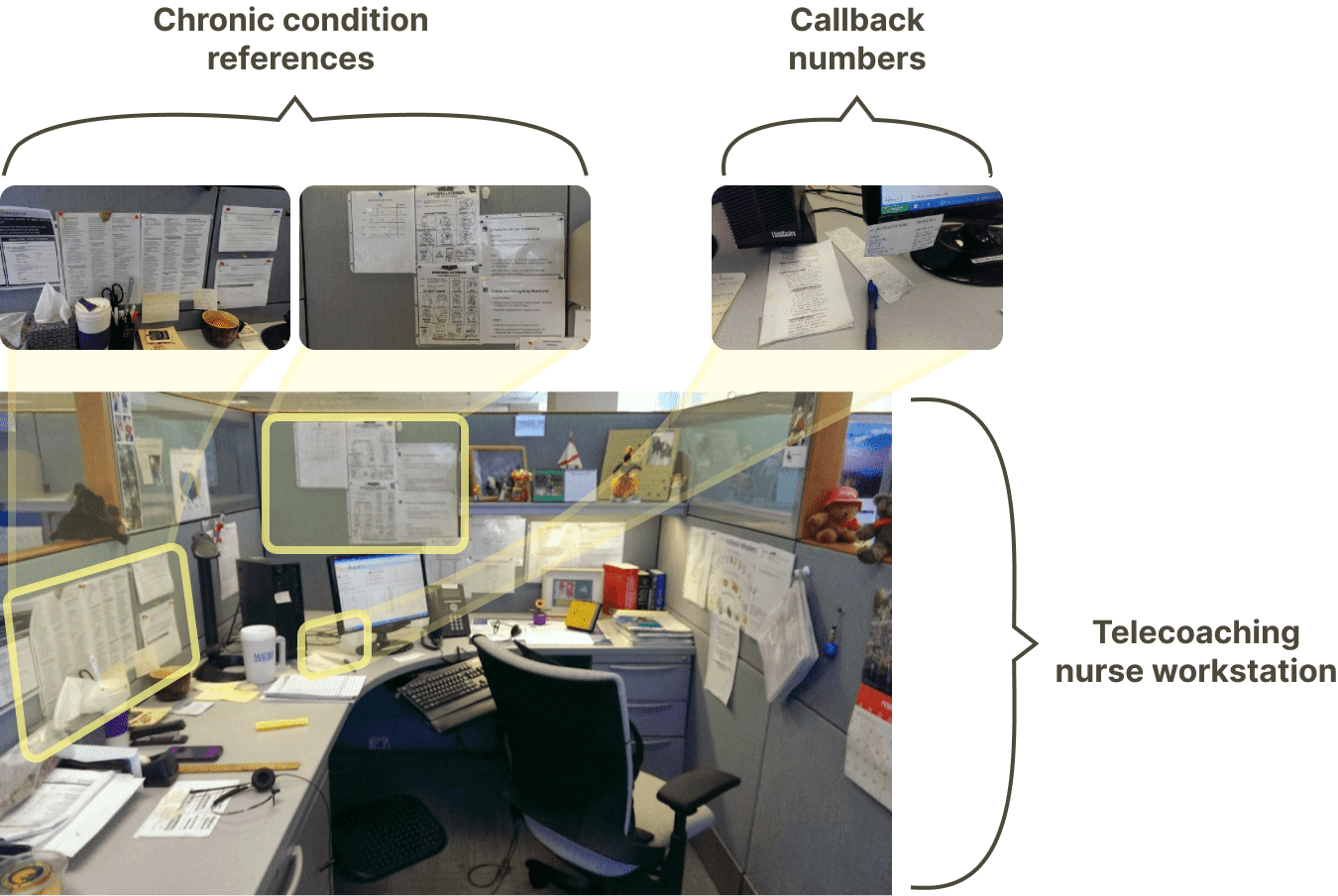
I found another group at Alere that was coaching patients over the phone. I pitched a research plan to visit that group and shadow nurses over 2 days with my manager.
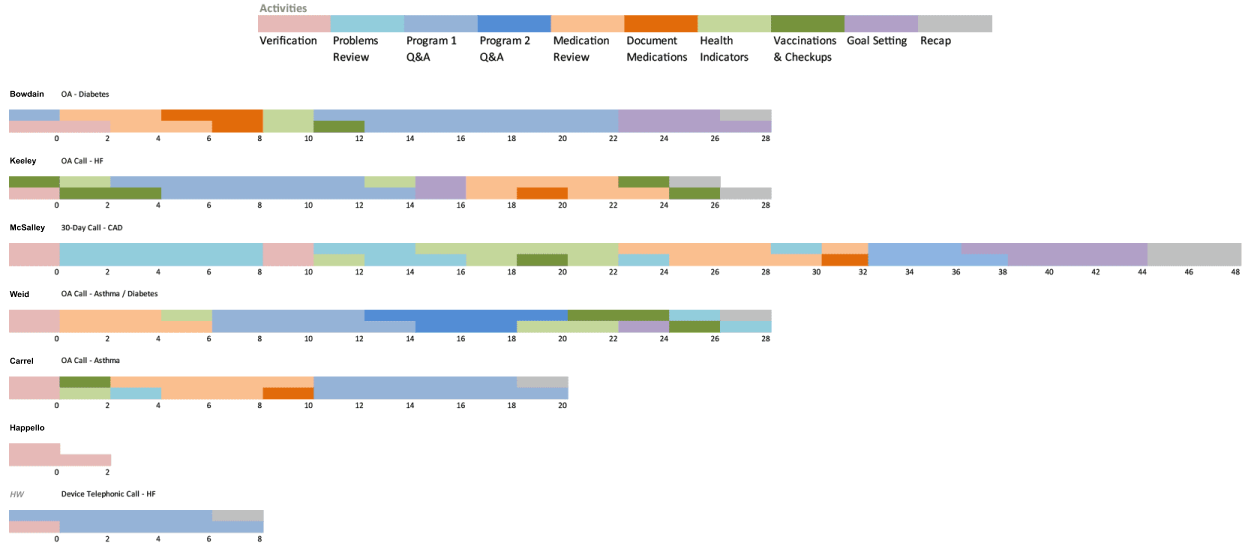
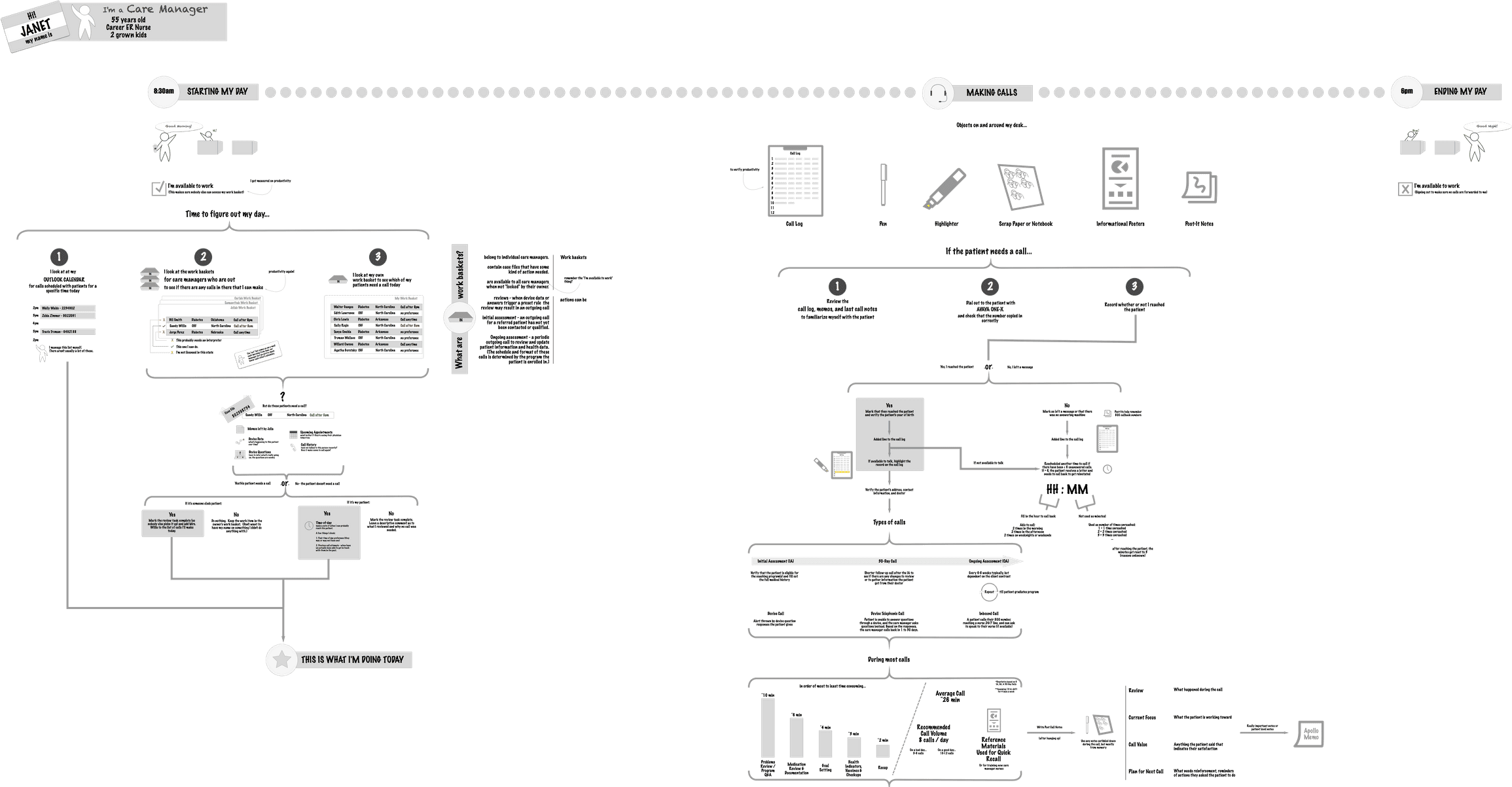
Patient-focused care plans
The nurses we spoke to told us that care plans should start with the patient's goal. If you can help them do something they want, patients are more likely to succeed. With a quick sketch and prototype, we showed those nurses what we could do if we flipped the order of the form to focus on the patient's goal first.
Then, nurses could easily tie the patient's goals back to their clinical problems. This helped follow good documentation practices.
Last, the nurse could write down any interventions they wanted the patient to follow. During the next visit, they'd easily be able to check in about each goal.
This approach allowed us to bring Care Plan goals directly into the Patient Portal (led by another designer on our team). Together, patients and care managers had a shared goal to work toward.
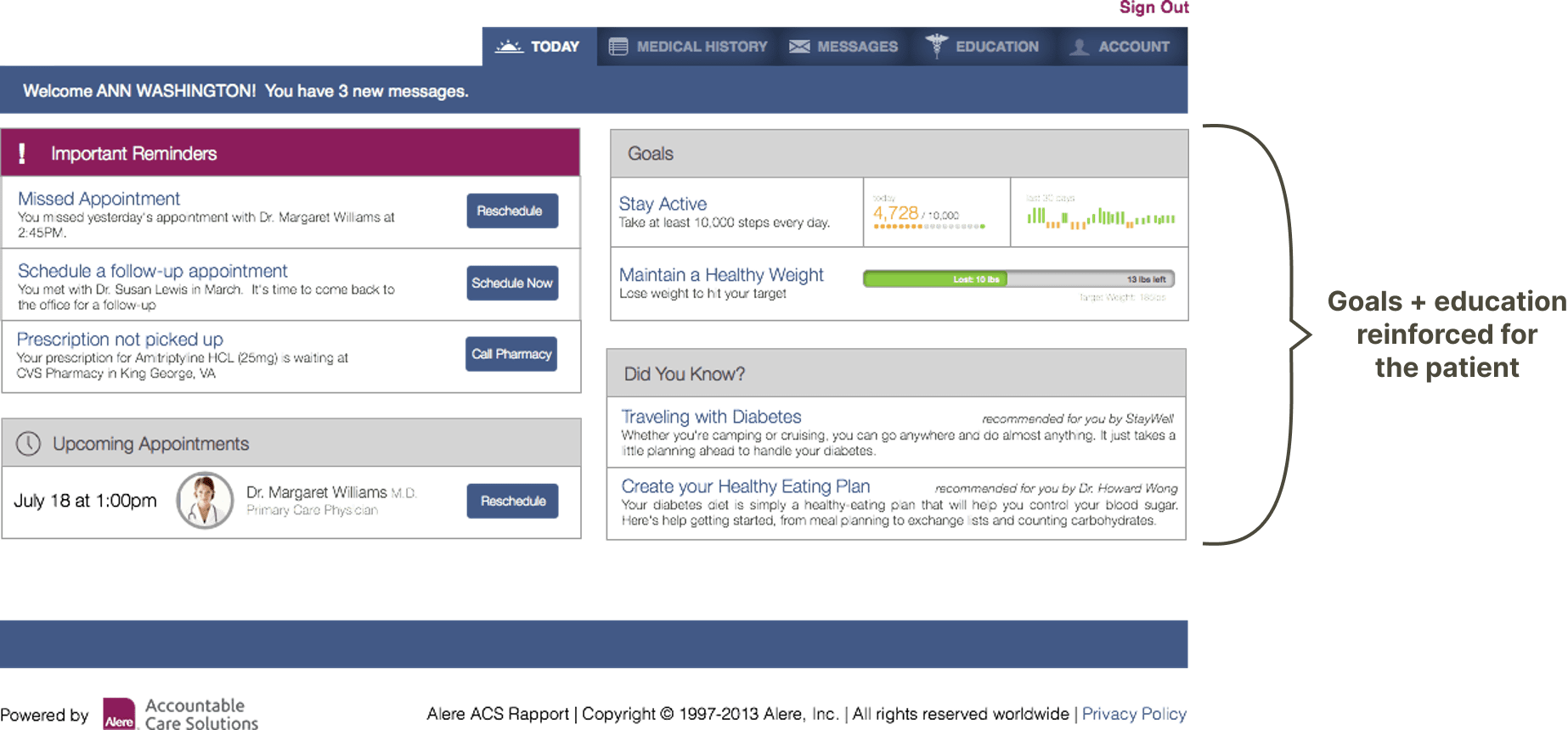
Our learnings
Observing clinical situations led to a better and faster understanding of the core problem. There was no substitute for having the nursing team participate in design of the feature. Rather than toiling over minutia, I got the big-picture design problems solved first.
With the atomic concept of a Care Plan in place, we easily iterated in future projects. Those projects (including Reminders, Care Team Management, and Messaging for Care Plans) provided real value to clinicians and patients.